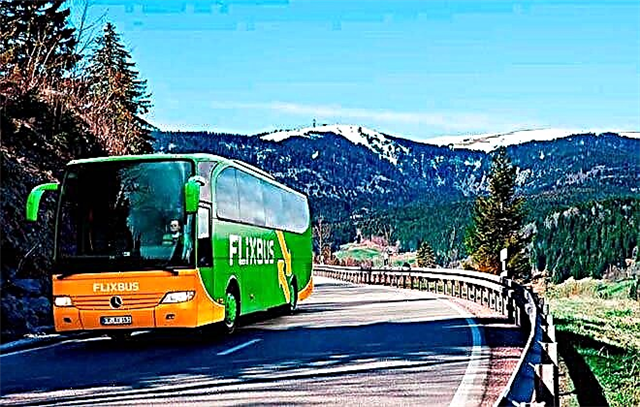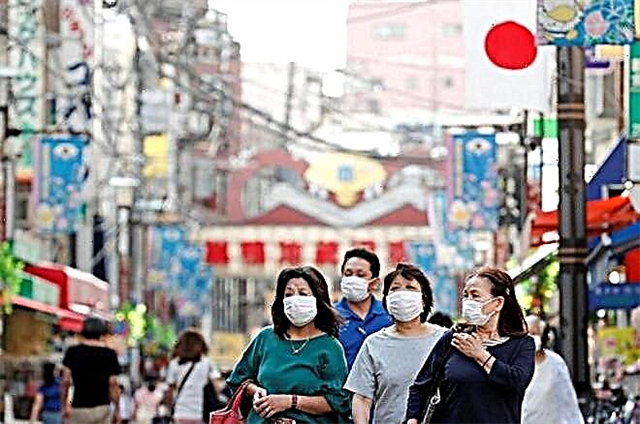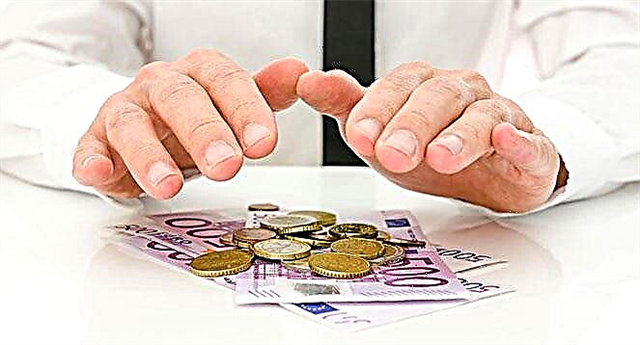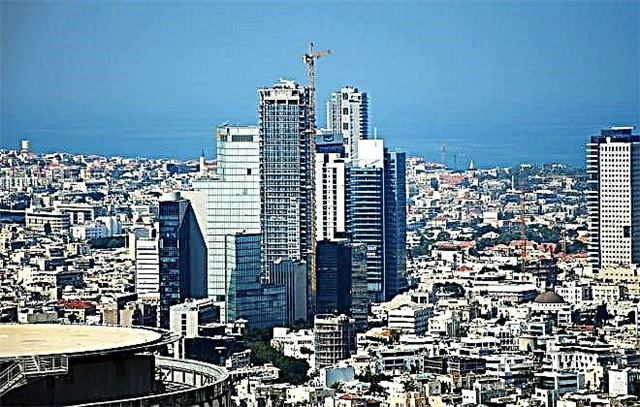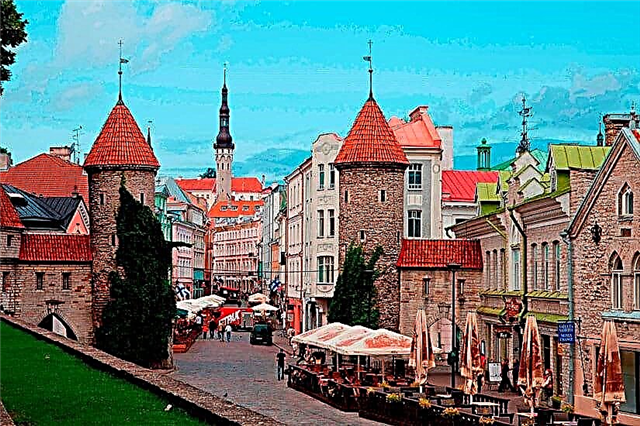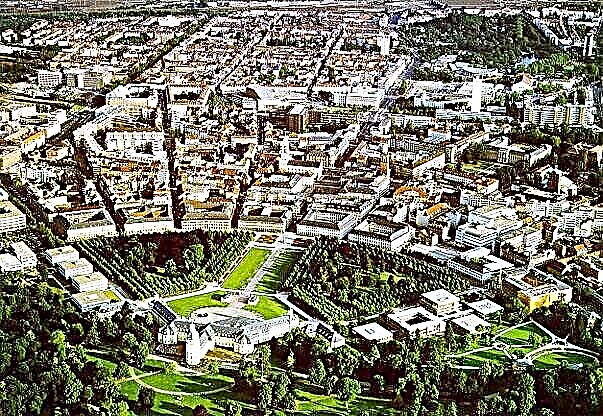Investors are constantly on the lookout for new opportunities and sources of income, while also using proven investment methods. Investing in residential and commercial real estate in large cities with large populations, high economic performance and the prospect of further development is a reliable investment. It is for this reason that real estate in Karlsruhe does not cease to be in demand, which led to an increase in prices, the sale of apartments and houses through auctions and the development of new territories by the city, where residential construction is planned.
Real estate market in Karlsruhe
Since Karlsruhe is a former royal residence, the city has a rich architectural heritage. It was only founded in 1715, and yet the old town exudes the charm of a medieval exhibit town. Its beauty attracts more and more young families and students every year.
A significant role is played by the fact that 36.7% of the area of Karlsruhe is allotted to forests, park areas, lakes, embankments and other places for recreation of citizens in the fresh air. Of the entire area occupied by the city, which is 174 km2, only a quarter of the territories have been allocated for buildings.
Karlsruhe is a growing city, which is already home to about 300 thousand people. The city's real estate market is quite versatile, mainly because there are a large number of condominiums of any type and size for sale.
The dwellings, originally built for wealthy city dwellers, are now home to young scientists, childless couples and students. But within the city there are also high-class design houses that have been converted into apartment buildings. They are often chosen to live by professors and other employees of the Technical University and adjacent institutes.
Karlsruhe is a thriving city with per capita income above the German average. Unlike other cities in the Baden-Württemberg region, such as Freiburg im Breisgau and Stuttgart, the local urban real estate market is not regulated so closely by the authorities.
This means, first of all, an increase in the number of construction projects sponsored by private investors, thanks to which new residential complexes have been built recently. The most notable project is the City Park in the Südstadt area. The first 1,100 apartments were commissioned in mid-2021.
New residential developments are already planned along Ludwig-Erhard-Allee. The city is also considering buying a 6-hectare land plot for the construction of subsidized housing.
Real estate sales in Karlsruhe are proceeding at breakneck speed. Due to the high demand, real estate is sold in the auction mode for the highest price offered at the auction; as a result, in some parts of the city the cost of apartments and houses increases. Karlsruhe continues to grow, and the rental yield is quite high, so every year the number of investors who want to buy apartments in the city only increases.
Although Karlsruhe is a relatively young city, the share of historic buildings here exceeds the national average. The city can be considered rich, it is the center of the bourgeoisie, so visiting students and scientists occupy old family houses.
Karlsruhe is constantly renewed without losing its old splendor. Many townhouses have been meticulously refurbished and are now being sold as residential buildings. Much attention is also paid to the tenement buildings of the post-war period, which dominate the surrounding neighborhoods.
Despite the rise in the value of commercial and residential real estate, purchase prices are still at a moderate level, while the potential for development remains. For the investor, Karlsruhe is ready to offer a wide variety of typical forms of real estate - from an executive villa and small Art Nouveau houses to simple residential buildings of the 1950s.
Popular and less attractive areas
Despite the fact that Karlsruhe is a popular city in general, not all of its districts are equally attractive for residents and, accordingly, for investors as well. Below is a list of the most liveable areas with developed infrastructure, good transport links and places for recreation and entertainment.
Centre
The city center is the heart of Karlsruhe. Here people work, shop, study, live and spend their free time. This area consists of the eastern (Innenstadt-Ost) and western (Innenstadt-West) districts. The border between them is Karl-Friedrich-Strasse.
Innenstadt-Ost is home to a significant part of the city's shopping districts, the Karlsruhe Palace and the main part of the university campus - life is in full swing here.
In the heart of Karlsruhe there is a magnificent castle from 1715, always visible above the houses, and a park. The castle houses the Federal Constitutional Court and the State Museum of Baden. Half of the residential area is built up with old and new houses. Kaiserstraße is the longest shopping street in the city with many typical shops and department stores in the big city.
Trams and electric trains take people to Kaiserstraße. In the eastern regions, residents get on three buses. The central station is located outside Innenstadt-Ost. Well-designed road junctions with numerous multi-lane main and federal highways make it easy and quick to get from the interior to the center in a few minutes.
In the market square, vendors offer a wide variety of goods and make deliveries several times a week. To the east are the buildings of the University of Karlsruhe. A large castle park with a botanical garden stretches all the way to the borders of Hardwald. It is one of the city's most popular green spaces, located entirely in Innenstadt-Ost. There are kindergartens, schools of all levels of education, medical institutions, and homes for the elderly.
Innenstadt-Ost is one of the most desirable areas to live in Karlsruhe. It dies down only in the late evening hours.
The Innenstadt-West is home to most of the Karlsruhe Palace. The west of the district is represented almost exclusively by apartment buildings and several buildings in the old and new style.
The streets of the residential areas are decorated with many trees and small lawns. The number of old and new buildings is balanced. Offices and shopping centers are located in glass structures. The palace gives the area a historical character. The Kaiserstrasse is the main shopping street with department stores, shops, restaurants lined up all the way to Europaplatz. To the west is the Federal Constitutional Court, and to the South is the Federal Court.
The Kaiserstrasse is connected to various tram lines and trains running on the main shopping street. Two transport hubs allow you to reach any city point from the Karlsruhe market and Europaplatz. The Reinhold-Frank-Strasse connects the north and south of the region, and the federal road connects the east and west.
There are many green areas and woodlands in the area.
There are many primary schools of all educational levels in the district. There are also private schools and night academies. But there are not enough kindergartens in the district.
Innenstadt-West is characterized by a strong business life, heavy traffic, well-maintained apartment buildings.
Western regions
Daxlanden is a large district of Karlsruhe, divided into 4 sub-districts: Alt-Daxlanden, Neu-Daxlanden, Daxlanden-Ost and Reinstrindzlung. On its territory there are large green areas, where people relax in clubs under awnings.The city is reminiscent of the countryside.
The area is surrounded by the artificial foothills of the Rhine. On its territory is the island of Rappenwört. Rheinstrandsiedlung is built up with small single-family houses, and the remainder of the sub-district is a mixed residential area with single and multi-family houses, churches and small shopping areas. There are also historic buildings that are still guarded.
The transport links are pretty good. One tram line connects the area with the main transport hubs in Karlsruhe, the other connects the northern part of the area to the port of the Rhine. In the south, there is a connection to the S-Bahn road network, the S2 line runs between the district and the center of Karlsruhe and ends in Rheinstetten. In the north and south there is an exit to federal highways. The city center can be reached in 15 minutes by public transport.
There are 7 kindergartens in the district, mostly Christian ones. An elementary and secondary school has been opened, as well as an educational institution in the center, in which both such schools are combined at once.
Daxlanden is chosen for living by people who love nature, more often by whole families. It is a very green area, charmed by the church towers, manicured gardens, the foothills of the Rhine and Althein.
Grünwinkel is located in the west of Karlsruhe and is its oldest district. Significant areas of Grunwinkel are dedicated to the industrial zone, and the residential area is developing here thanks to the presence of its own S-Bahn connection and convenient access to the city road.
The area has retained its historical atmosphere, and various architectural styles can be found here. Among the new single and apartment buildings, painted with fresh paint, there are old buildings. Grunwinkel has one of the oldest chapels in Karlsruhe, the area is striking with many churches. The shopping area runs along the S-Bahn. There are also DIY shops, large supermarkets, a climbing hall, many pubs and bars, and two discos.
A bus line connects Grunwinkel with the city center. The S-Bahn station is located directly at the Grunwinkel gate and provides connections to the city's transport hubs. The bus passes between the main train station and the exhibition grounds. There is a main road along which you can get to the opposite central part of the city in the shortest possible time. There is a country road south of Grunwinkel, which is the most convenient way to get out of the city.
There are 6 kindergartens, primary and secondary schools. There are several well-organized sports clubs in the area. In the south of the district there is a large forest area with walking paths.
Grunwinkel offers city dwellers the opportunity to organize good shopping. But the transport links here cannot be called developed. Grunwinkel, although a residential area, does not have a high standard.
Mühlburg (Mühlburg). The formerly independent city of Mühlburg is today a well-kept residential area on the river and one of the most densely populated areas of Karlsruhe. It is distinguished by a metropolitan view, the presence of its own business center, commercial space and renovated old buildings.
Mühlburg is a typical metropolitan area. Almost all new and old buildings have a balcony. The streets are planted with trees and lawns. Retail stores and gas stations are well distributed throughout the district. There is a business center in the south. In the northwest there is a commercial area with a bowling center and clubs.
The area has excellent transport links to the city center. City rail lines run between Karlsruhe market and Mühlburg. In addition, passengers are transported by 4 buses. Mulburg is crossed by several two-lane roads, and there is also a direct exit to the main road.
In the center is a popular green park, and the banks of the Alba and Günter-Klotz-Anlage rivers in neighboring Beyertheim are ideal for playing tennis and basketball, jogging, long walks or relaxing on the lawn. There are enough kindergartens and schools, nursing homes and playgrounds for children.
Mühlburg is the ideal place for those who want to stay in Karlsruhe but still feel like they are in a different city.
Oberreut The area is located about 2.5 kilometers from the center of Karlsruhe. About 10 thousand residents of the district live mostly in renovated apartment buildings with balconies.
The image of this area is largely created by high-rise buildings, but in some places there are apartment buildings with small courtyards. Unpopular architecture is exposed in a positive light thanks to the friendly color scheme of the facades and green streets.
Residents of the area mainly travel by tram, during rush hours it travels from the center of Karlsruhe to Oberreuth and back. Residential areas are served by buses.
To the west and south, the area is surrounded by forest with jogging paths. The local sports center has a sports club. You can relax in a large complex with a lake, located in the neighboring district of Beyertheim, where you can rent boats, tennis and basketball courts, green areas. There is a primary and secondary school in Oberreuth, and another school is located in the north of the community. The Weiße Rose Community Center has been established in the center of the district and regularly hosts local events for young people and retirees.
A settlement with unpopular high-rise buildings could hardly be better designed than Oberreuth.
Weststadt can be described as a clean residential area with wide streets and good public transport links. Residential buildings are usually four-story, often with balconies.
Most of the residential area is occupied by new apartment buildings and old buildings. There are apartment buildings rebuilt into mansions. Most of the streets are visually expanded with trees and small green spaces. There are many supermarkets and restaurants in the district.
Trams and commuter trains run through Yorkstrasse in the center of the district, with connections to all parts of Weststadt. A bus route leads to residential areas, and a military road, which is a federal highway, has been laid in the center of the district.
In the South there is Gunther-Klotz-Anlage. Here you can rent a boat, play tennis and basketball on special grounds. The nearby Europahalle is home to frequent entertainment and shopping areas where you can go shopping. In Weststadt, there are 2 primary and one secondary school, children's hospitals.
Weststadt is a popular area for living, the structure of the population is balanced. The area can be called lively, the proximity to the center improves the quality of life of the population.
Eastern regions
Rintheim is located in the east of Karlsruhe in the countryside. In the 1970s, a local vacant lot was built up with 16-storey skyscrapers.
The village is notable for its quiet streets with single and apartment buildings. Many buildings have courtyards. The high-rise field is to the east of Rintheim, and the contrast between it and the rest of the area is immediately striking. Rintheim can be called socially oriented, the majority of local residents live on welfare.
A tram line connects Rintheim with the center of Karlsruhe and leads to the port of the Rhine. In the north, passengers are served by another tram. The expressway takes you to the city center. There is a motorway on the outskirts.
Elfmorgenbruch is located close to residential areas, with forests and lawns for walking and jogging. Rest is spoiled by the noise of car traffic and some contaminated areas. There is a small lush garden nearby, which is more pleasant to walk there. The district has several primary and secondary schools, five kindergartens, mostly Christian, a sports club and several hobby clubs.
The residential buildings of Rintheim are a livable area with well-tended gardens and quiet streets. And the high-rise buildings on the Rintheim Feld create a gloomy impression.
Hagsfeld in the northeast is divided into 2 residential areas and several business parks. The area looks more like a rural area, surrounded by spacious meadows and fields. Individual half-timbered houses and several retail shops round off the friendly look of Hagsfeld.
Hagsfeld includes several residential areas with single and multi-family buildings and business parks. In addition to the beautifully restored half-timbered houses, there are also mansions. Roßweid and Am Storrenacker have two commercial areas along the highway. In addition to industrial production, Hagsfeld has several DIY stores and other large retailers. The popular disco park, bars and dance cafes are open.
Excellent transport links and all types of public transport. Trains run throughout the area and take the residents of Hagsfeld to the center of Karlsruhe and to neighboring areas. Residential areas are served by buses. The motorway allows motorists to quickly leave the area. The road to the west leads to the very center of Karlsruhe.
In the north, there is a beech forest with paths and clearings for relaxation. Hagsfeld South has a sports center with tennis courts, a swimming pool and an athletics room. The primary school here is the only one in the entire district - about 300 students study in it. There are also kindergartens and hobby clubs. Hagsfeld is a quiet suburb of Karlsruhe. Another highway is planned to be built in the south of the district.
Grötzingen is located on the very edge of Karlsruhe and can be considered an independent municipality near the Durlach district.
In the west of Grötzingen, there are three high-rise buildings that slightly disturb the landscape. Otherwise, the area is built up with single and apartment buildings and resembles the countryside. There are enough shops in the district, there are Catholic and Evangelical churches.
The district station is approached by 2 S-Bahn lines (metropolitan railway) - one line connects Grötzingen with the center of Karlsruhe, and the other starts from the main station of the city and goes through the entire district to the main station of Pforzheim. Buses run through residential areas. In the south, there is a federal highway connecting Grötzingen with the main traffic axis Karlsruhe and the neighboring districts. Residents can also use public transport in nearby Durlakh.
Outside the residential areas is the Great Forest, a popular destination for hikers, joggers and cyclists. The area is surrounded by fields, meadows and forests. 4 kindergartens, an elementary and a secondary school have been opened, where children from neighboring districts also go. Many hobby clubs have been organized.
Grötzingen is a village with a characteristic rural landscape and good transport links.
Durlach is well connected to the city center by transport links and has everything for a comfortable stay. It has the widest range of housing prices. Art Nouveau single-family houses and villas take to the streets.
Durlakh has retained its old appearance. Circular roads here pass by houses of the last century. Remaining historic buildings can be seen throughout the area. The architecture is very diverse. Many villas are built on the mountain slopes, where local celebrities live. The old town within the district is characterized by very old buildings and partly by historical houses, while in the rest of the residential quarters there are new buildings.
Durlach has 2 tram lines connecting the center of the district with Karlsruhe and Durlach with the north of the Wolfartsweier district. Eight different buses cross the entire area. There is also a lift to the mountain. Alternative public transport is the 3 S-Bahn lines - they connect the center of Durlach with Karlsruhe and the surrounding area. Federal highways are laid in the northwest and in the south.
The main shopping street is located in the center, where retailers and supermarkets are located. The forests in the area are suitable for hiking. Sports enthusiasts participate in local sports clubs. 10 kindergartens and an elementary school are open - children travel to a secondary school in the neighboring area. Residents of Durlakh do not need to travel to shopping in the city center - everything you need can be bought on the spot.
Durlah is a very attractive area. The old town is perfectly preserved here, people have the opportunity to relax in nature, go in for sports. Good transport links, excellent infrastructure and green hilly landscape add to Durlah's popularity.
Oststadt is a highly sought after area in the heart of the northern wildlife park.
On the streets of Oststadt, there are approximately equal numbers of old and new 4- and 5-storey buildings. The facades of the apartment buildings are painted in different colors, some of them have balconies. The area is well landscaped.
The Durlacher Tor is one of the main transport hubs in Oststadt. Several tram lines take passengers in different directions to the center of Karlsruhe and neighboring areas. There is an urban railway transport, 3 bus routes, which mainly connect the residential areas of Oststadt with the residential areas of neighboring areas. Three main roads lead to the city center or the Durlach motorway.
In Oststadt, there are 2 primary and secondary schools, a business gymnasium and a special school. The music school was housed in the historic building Schloss Gottesaue. Retail stores and supermarkets are often located on the ground floors of residential buildings. Oststadt is an area with restaurants, shops, hotels, petrol stations.
Oststadt is fully consistent with the status of the metropolitan area. It impresses with the liveliness and beauty of the Art Nouveau architecture.
Northern regions
Waldstadt (Waldstadt). The structure of the district has developed in stages, and therefore there are both single and apartment buildings, and terraced houses in the complexes. The whole area is surrounded by forest.
Previously, Waldstatt was an underdeveloped area in which a poor population lived. Today the picture has changed: beautiful terraced buildings, multi-family and single-family houses are gradually being added to the built apartment buildings. Now representatives of various social strata of the population live here. There are about 75 stores in Waldstadt. The economic situation in the region is considered difficult, and therefore there are no restaurants or bars here, and the streets are empty in the evenings. The music of the local chamber orchestra is offered to people as cultural events.
There is a tram line in the region, the final stop of which is the European Waldstadt School. The city center can be reached in 12 minutes by this tram. Buses take passengers into the interior of residential areas and provide access to transport interchanges in the center of Karlsruhe. The highway provides access to both the center and neighboring communities.
There are 7 kindergartens, 5 schools, 3 student dormitories, 2 nursing homes, a sports center, and saunas. For lovers of fresh air and hiking, there are trails in the neighboring Hardtwald area.
Waldstadt is a livable area with good public transport and outdoor activities. The availability of educational institutions and nursing homes makes the area more or less attractive for families with a modest income.
Nordweststadt (Nordweststadt). The area is extremely liveable and consists mainly of single and multi-family houses. It is surrounded in the northeast by fields and small wooded areas and is a cross between a rural area and a large city.
Driving along the Moltkestraße reveals a typical urban landscape.Moving on to Berlin Square, there are well-groomed streets lined with mansions and apartment buildings, lush vegetation and neatly trimmed hedges. In the west, divided by the Neureuther Straße, is the local industrial zone. In the south, near the hospital, the buildings of the university are located.
The tram lines of the district run from the city center, crossing the eastern part of Nordweststadt in a northern direction, and through the district to the main station of Karlsruhe. Additional buses run to residential areas. A federal highway runs along Nordweststadt, connecting the north and south of the city. In general, the center of Karlsruhe can be reached in 10 minutes.
The residential areas of Nordweststadt have the most green areas. In the northeast there are small wooded areas. There are two primary and two secondary schools, seven kindergartens, a youth club, football fields, basketball courts, local clubs. Supermarkets, bakeries and other grocery stores are open throughout the area.
Nordweststadt is a cozy and quiet residential area, most of which is built up with well-kept single and apartment buildings.
Nordstadt (Nordstadt) - the youngest district of Karlsruhe and the former territory of the US armed forces. Represents many green areas and almost exclusively new buildings of apartment buildings.
Almost the entire territory of the district is built up with apartment buildings, and therefore Nordstadt makes a very favorable impression with its clean, well-groomed and new streets, decorated with trees and lawns.
There are several cross roads from the center of the district. The eastern border of the district is crossed by the federal highway. Buses run only through the Europaplatz transport hub. Since 2006, a tram line also leads to Nordstadt. As the population of the area grew rapidly, the authorities envisaged the expansion of the previously organized bus line.
Karlsruhe Park is partly located in the Nordstadt district - this is the most popular recreation area, and it is within walking distance of residential buildings. You can get here on foot or by bike. Approximately 25% of the area's residents are under 18 years of age. It has everything you need - supermarkets, small shops, snack bars, a hairdresser, a gymnasium, kindergartens and hobby clubs.
Nordstadt is a popular place to stay for families with children and is known as a lively, young and well-thought-out area of Karlsruhe.
Neureut is one of the most densely populated areas in the city with its green spaces and various housing options and has a large number of schools and kindergartens.
Many multi-storey apartment buildings, cottages for one or more families. High-rise buildings that do not fit into the overall picture of the residential complex. In the depths of the district there are several half-timbered houses and churches.
Transport links can be called modest. The city railroad connects Neureut with the center of Karlsruhe. There is a bus to the residential areas. The federal highway runs along the southwest and curves towards the north of the district.
There are 6 primary schools, 2 secondary schools, a music school. Children are encouraged to attend hobby groups in one of the many clubs. Local supermarkets meet the residents' daily food needs. People rest mostly in nature - in the east there are many forest trails for walking.
Neureut is an attractive residential area for its well-developed infrastructure, educational institutions and a sufficient number of grocery stores. But it's better to get your own car.
Knielingen is the second largest district of Karlsruhe. Quiet, bordering the Rhine and reminiscent of the countryside.
Knilingen is characterized by a complex architecture. Most residential areas are formed by single and multi-family buildings, sometimes located around small gardens. Well-preserved half-timbered houses, churches and mansion-like buildings are scattered throughout. The construction of high-rise buildings has not been deployed here, and therefore the area makes a rather friendly impression and creates the feeling of living in a separate community outside the big city.
Good transport links. One tram line runs inland, the other takes passengers to the center. Bus lines connect you to various residential areas. On the western border, the transport is carried out by a regional train. Karlsruhe main train station is three stops from Knilingen. There are two federal highways in the district, one of which leads to the center of Karlsruhe, and the other is used to connect the north and south of Knielingen.
In order to spend time in nature, the banks of the Rhine and the local lake in the nature reserve are perfect. There are two primary schools and one secondary school. In addition to several supermarkets, various retailers and bakeries, 3 business parks have been built in the area.
Knilingen is a balanced rural area with good transport links and plenty of recreational facilities.
Southern regions
Weiherfeld-Dammerstock The districts are separated only by the small river Alb, but they are connected by three bridges and a common local club. Weierfeld is characterized by a large number of single-family houses and high-quality apartment buildings, while Dammerstock is characterized by a predominantly caste design.
Dammerstock was built in the 1920s with the aim of building small residential buildings at affordable prices for workers and civil servants. But this is not a prefab housing estate. The local residential area is characterized by a much flatter construction and more like a terraced residential complex. And Weierfeld mostly consists of single-family and apartment buildings. The Alb River gives the area a friendly look.
Thanks to the close proximity of the main station, Weicherfeld-Dammerstock has excellent transport links. The tram stops at the area's own station. The residential areas are accessed by a bus. On the road that runs through the entire area, you can get to the federal highway A5.
There is a city garden with wide manicured lawns. The nearby Karlsruhe Zoo and congress areas with various halls for important events. In the northwest of Weierfeld, there is a field with sports facilities and a lake with boats for rent. To the east of Dammerstock there is a large nature reserve with a lake and well-groomed playgrounds. 3 kindergartens, an elementary school, shops, bakeries, supermarkets, pharmacies, newsagents are open.
Weierfeld and Dammerstock are middle class residential areas. It is mainly inhabited by families with a low level of income, but the area cannot be called socially oriented.
Südweststadt appears to be divided into squares, and the local architecture is represented in equal measure by new and old tenement buildings.
It is one of the most densely populated parts of Karlsruhe (20,000 inhabitants). The lower floors of the residential buildings house restaurants and retail stores. The architecture is dominated by new and old apartment buildings.
The main city roads are located in the area. In the south of Südweststadt is the main station Karlsruhe. Long-distance and regional trains come to the area, the main station serves as a transport hub for tram and bus lines, electric trains. There are many stops in residential areas. The main highway (military road) stretches from west to east, and in the south, transport runs along the main city road.
Many government agencies are open here, such as the State Insurance Company, hospitals, the city zoo, the city garden, and the congress center. Many schools have been opened. The city garden with manicured lawns and magnificent flower gardens is ideal for relaxation.Hundreds of animals can be studied at the zoo.
Südweststadt is a very popular and well-structured area. It can be called modern, urban, developed and lively.
Südstadt (Südstadt) borders the north of the center of Karlsruhe and has access to major city roads. The area has a good quality of life.
The area has a balanced mix of new and old buildings. The architecture is varied, and houses with spacious backyards and balconies are common. The huge cinema attracts residents of the neighboring parts of the city 7 days a week, after which movie lovers gather in catering establishments. The streets are lined with trees and small flowering lawns.
Tram lines run from the city center from north to south. Another tram carries passengers in the southern part and stops at the main station in Karlsruhe. The western part of the district is served by two other trams. The residential areas of Südstadt can be reached by three buses. Several main roads cross here that lead to the center of Karlsruhe and the Karlsruhe-Mitte motorway.
The district has an elementary and secondary school, kindergartens, medical institutions for young people and the elderly. You can relax in the city park and zoo, located in the neighboring Südweststadt. There is a large wooded area with a lake and hiking trails.
Südstadt is a lively area with a lot of shops and restaurants. Transport links are good, people have the opportunity to relax in nature and play sports. This is an area for urban people who appreciate the infrastructure of a big city and the proximity to the center.
Rüppurr with a population of 10,000 is divided into 7 residential areas, including the well-known Merchenviertel and Baumgarten.
In residential areas, you can see mainly terraced complexes; some buildings have a courtyard. The famous Märchenviertel is located here - the most exclusive residential area in Rüppur. Magnificent homes with beautifully manicured gardens, a manifestation of the cityscape between old mansions and church towers.
In the very center there is a tram line connecting the area with the main train station in Karlsruhe. There is no other public transport, but most of the inhabitants of the district have their own car, and a highway runs from north to south through the entire district, which connects Rüppur with the rest of Karlsruhe. There is a motorway nearby.
There are many schools of all levels and forms of education, young people under 16 attend various clubs, 6 kindergartens are open. In Alt Rüppur, the Alba coastline is ideal for walking, cycling and jogging. Various events are held at the Schlossplatz and in the community center. Local shops fully satisfy the needs of the population.
Rüppur is a well-organized area with a high quality of life. Despite the modest transport links, the area is popular with upper-middle-income families.
Beiertheim-Bulach The two districts are separated by a federal highway and can accommodate about 7000 residents. The area is characterized primarily by its excellent recreational opportunities and its proximity to Karlsruhe Central Station.
Both areas are surrounded by Deutsche Bahn railways or motorways. There are more old buildings than new ones. Bulakh resembles a rural area due to the large number of half-timbered houses.
Bayertheim-Bulach is served by three buses, all three reaching the surrounding area, and there is also a tram network. The center can be reached directly in 10 minutes, and the Brauerstraße can be reached in 5 minutes by car. The city road allows access to neighboring areas.
In the west of Beyertheim there is the Günter Klotz-Anlage and recreation area, in winter there is a sleigh ride. In summer, the green area is used for sports, hiking and outdoor recreation. On the lake you can rent a boat, play basketball and play sports. Nearby is the Europahalle with 9000 standing and seating. Primary and secondary schools, grocery stores, small retailers and bakeries are open.
Overall, Bayertheim-Bulach is an area with a high quality of life, clean and quiet, with excellent leisure facilities and excellent transport links.
Adjacent villages
Palmbach is a mountain village in a remote area of Karlsruhe. There are 2 churches, a market and many clubs here. The area is located in nature, which makes it seem that time has stopped in it.
The tower of the Waldens Church rises over the entire city. Mansions with garden plots create a friendly look. Housing in the area is all occupied, and Palmbach responds to the growing demand with the implementation of construction projects on vacant plots. A new residential area with single-family houses and a new business park were built here.
There is a highway through the center that leads to the neighboring communities. There is access to the main road through the outskirts, located on the motorway. Public transport is abundant. There is no tram, but 5 buses carry passengers to the transport hubs of Durlach, Karlsruhe Central Station and Zündhütle.
In addition to bakeries and small retailers, Palmbach has a large Edeka store, hairdressers, and travel agencies. There are kindergartens, two primary schools, and a secondary school. The City Library delivers about 6,000 educational media materials here once a week. There are interest clubs in the region.
Palmbach is ideal for people who would like to live in a quiet and well-organized area near the city center.
Wolfartsweier is a small area of the city that inspires sympathy for its flat buildings and lots of green spaces. It is served by a nearby highway and is not particularly tidy and clean.
The streets are almost completely covered with trees and lawns. The architecture is characterized by many single and multi-family buildings and high-rise buildings on the rural side of the area. Most of the streets are noisy due to the highway and a lot of people. Wolfartsweier can be described as a clean residential area and nothing more.
Access to the public transport network is provided by two tram and three bus lines. One tram is ready to take residents to Durlakh. Another tram takes people to the center in 15 minutes. One of the buses also goes there - it will stop at the main station and the road to Durlakh. Bus 107 connects Wolfartsweier with other areas. The road network is represented by highways and federal highways. Motorways lead to the highway and circle around the area.
A kindergarten and an elementary school have been opened. To the south of the area, there are two forested areas with walking paths. The local hotel has a swimming pool. Only a few shops, businesses and cafes are open in the area.
Wolfartsweier is a livable area with no metropolitan ambitions, if you ignore the noise of the motorway.
Hohenwettersbach is one of the smallest municipalities in the city. Its city hall, church square and old clubs only underline the independence of the municipality, which is like a mountain village.
The landscape is characterized by single family homes with gardens. New construction projects have been started and they are now approaching their final stage. There is only one butcher, bakery and post office, a grocery store with only basic goods and a sports bar. For shopping you have to go to the neighboring area.
There are only bus routes. The bus goes to the center of Karlsruhe via the S-Bahn and tram lines. Another bus runs exclusively on the ring line from the mountain village to the last stop, Zündhütle. For long distances, you can travel along the highway and federal highway.
Hohenwettersbach has a primary school, two kindergartens and two churches, several clubs (sports and music), and two golf courses. In the North, the area is surrounded by mountain forest, many fields and unused green spaces. The whole village is surrounded by nature, and mostly families with children and elderly people live here.
Hohenwettersbach must be viewed as a village community. The mountain village with its nature, quiet streets and clean neighborhoods make the area attractive for families with children.
Grünwettersbach is more of a village than an urban area. Most of the landscape is wooded slopes with one or more houses.
The wooded and hilly landscape features small villages and communities. Retailers and handicraft shops are located in the very center of the district. The streets are built up with single and apartment buildings.
Grünwettersbach is connected to the public transport network by 6 bus routes. One of the buses goes to the Zündhütle tram crossing, then moves towards the Karlsruhe main station. Even at night, one route operates here. There is a motorway in the immediate vicinity. Two roads connect Grünwettersbach with neighboring districts. There is also a main road nearby, which can be reached by car to the neighboring communities and the center.
There are no dedicated recreation areas in Grünwettersbach. But this is not required, since the area is completely surrounded by a green zone. There are 3 kindergartens and 3 schools in the area. Construction of a nursing home is planned.
Grünwettersbach is a friendly, green and well-organized suburb of Karlsruhe near the city center.
Stupferich (Stupferich) - formerly an independent municipality. The remoteness from the center and the small number of local residents give the area a rural feel.
Stupferich is a mountain village in a hilly area. There is a predominance of single and multi-apartment buildings. Well-preserved half-timbered houses are scattered throughout. There are several retailers in the center, which are not enough for residents. Stupferich looks like a village because of its quiet streets. There are several commercial establishments in the north.
There are 3 bus routes from public transport. One bus runs between Durlach and Stupferich, the other directly connects the area to the central station. A third bus takes residents to neighboring areas. In the center there is a main road that leads to Karlsruhe and neighboring communities. A federal highway leads to a nationwide motorway network.
In the east and south, there are wide forests with hiking trails. There is an elementary school in the district where parents can leave their child until late at night for an additional fee. The kindergarten is located right in the school building.
Stupferich is a pretty area that looks like a village community. Ideal conditions have been created here for families with children who try to avoid the bustle of the city.
Depending on what the region can offer to residents, different categories of the population choose it for living. Statisticians have found out which districts of Karlsruhe most often move single people, childless couples, families with children, students and retirees:
| Resident category | Preferred areas of residence | What attracts |
|---|---|---|
| Lonely people | Südstadt | Variety of cultural events, old buildings with courtyards, middle price segment. |
| Childless couples | Weststadt | Optimal transport facilities, kindergartens and schools in the village, trendy neighborhoods with lots of bars. |
| Families with children | Rüppurr | Large new buildings, renovated old buildings from the 1970s, lots of spacious lots in the countryside. |
| Students | Grötzingen | An area with a village character, a large number of post-war buildings in need of renovation. |
| Retirees | Waldstadt | High quality of life, a wide variety of leisure options, developed infrastructure, various options for residential real estate. |
Current prices for real estate rental
According to statistics, in Karlsruhe, from the moment of publication of the announcement of the rental of housing to the signing of the contract with the tenant, an average of 13 days pass, which speaks of the demand for rented housing.
Renting an apartment for residents of Karlsruhe is not too expensive - the monthly cost of rental housing in the city is 10.3% lower than the national average.
Rentals for housing in Karlsruhe are 2.9% cheaper compared to the average for the Baden-Württemberg region. Renting in the city is considered expensive - rental prices are 36.8% higher than the average rental price in Germany.
Residents of Karlsruhe spend on average 20.4% of their earnings on rent, excluding utility bills and additional costs for maintaining an apartment.
Current prices for the purchase of real estate
Karlsruhe is a popular city among locals and visitors, characterized by a high quality of life, a large number of attractions, green areas, educational institutions, medical facilities and retail space, and therefore local real estate is always valuable.
The high demand for houses and apartments in Karlsruhe has provoked a rise in property prices. Below is a table that clearly demonstrates the range of property prices in the budget, medium and luxury areas of Karlsruhe:
The average price of residential real estate located in Karlsruhe is 22.5% lower than the average house price in Germany. The table below shows the dynamics of prices in comparison with previous years:
The cost of apartments in Karlsruhe is 2% higher than the average cost of housing in the Baden-Württemberg region and 9% higher when compared with the average for Germany.
Cost of living in Karlsruhe
The total monthly expenses of a single person living in Karlsruhe are approximately 730.98 euros, excluding rental costs. And a family of four spends an average of 2509.27 euros per month, excluding the cost of rental housing. A significant part of the cost is the cost of purchasing food.
In Karlsruhe, food prices are 14.7% lower than the average food price in Germany as a whole.
Food product, euro:
- Loaf of fresh white bread (500 g) - 1.22
- Milk (1 L) - 0.77
- Egg (12 pcs.) - 1.67
- Rice (1 kg) - 1.70
- Local cheese (1 kg) - 5.00
- Chicken breasts without bones, without skin (1 kg) - 6.34
- Beef (1 kg) - 11.44
- Apples (1 kg) - 1.99
- Oranges (1 kg) - 2.36
- Bananas (1 kg) - 1.73
- Potatoes (1 kg) - 1.02
- Tomatoes (1 kg) - 2.90
- Onions (1 kg) - 0.68
- Lettuce (bunch) - 1.02
- Water (bottle, 1.5 L) - 0.19
- A bottle of mid-range wine - 3.99
- Local beer (bottle, 0.5 l) - 0.52
- Imported beer (bottle, 0.33 l) - 1.60
The cost of catering services in Karlsruhe is 9.9% lower than the national average:
Lunch and drinks at the restaurant, euro:
- Lunch at an inexpensive restaurant - 12.00
- Three-course lunch for two in a mid-range restaurant - 50.00
- McMill at McDonald's (or a similar set of dishes) - 8.00
- Cappuccino - 2.70
The level of the cost of utilities in Karlsruhe is practically comparable to the same average indicator for Germany - in Karlsruhe utility services cost residents only 2.4% more:
Community service, euro:
- Power supply, heating, air conditioning, water supply, household waste disposal, sewerage (for an apartment with an area of 85 m2) - 217.18
- 1 minute of conversation at a prepaid tariff of a local mobile operator (without discounts and activation of tariff plans) - 0.09
- Internet (from 60 Mbps, unlimited, cable / ADSL) - 25.62
In Germany, it is advantageous to buy a monthly pass instead of paying for public transport every time. In Karlsruhe, its cost is 15% lower than the national average.
Transport services, euro:
- One way ticket (city transport) - 2.40
- Monthly pass (regular price) - 59.50
- Taxi (regular fare, per 1 km of the way) - 1.80
- Gasoline (1 L) - 1.30
Conclusion
Investing in real estate Karlsruhe is undoubtedly a profitable investment. All indicators affecting the investment attractiveness of the real estate market in Karlsruhe are in many ways higher than the average for Germany: the city has a high consumer capacity index, a rapid rise in housing prices, a large share of tenants and a high population growth rate. There is also a low unemployment rate.
Moreover, on the territory of Karlsruhe there is a large university and medical institutions that attract students from other regions to the city, as well as people in need of qualified medical care. Investors are increasingly investing in student real estate in Germany, since this market segment brings more profit than it seemed previously: future specialists are ready to pay good money for quality housing, and parents do not refuse to help their children financially.
Residential real estate near the clinic is also profitable - relatives of patients from abroad need an apartment until the end of the course of treatment. The city is popular with tourists as well - local attractions, shopping centers and green areas make foreigners stay for a long time.
The only drawback of the Karlsruhe real estate market is the high cost of residential and commercial buildings and their low availability. However, the city is trying to satisfy the demand of buyers by sponsoring new construction projects and developing new territories.

